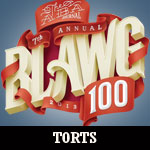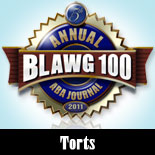This morning, a superior court judge in Wyatt County, North Carolina granted a citizen’s request for a declaration that the Harlem Shake was “over as a meme” and issued a corresponding injunction prohibiting YouTube from accepting further videos depicting or otherwise seeking to capitalize upon the phenomena. See Yorke v. YouTube, LLC, et. al., No. 2013-CVS-20213 (N.C. Sup. Ct. April 1, 2013).
This is big news.
Filed in mid-March by North Carolina resident Robert Yorke, the complaint sought a declaration that the “Harlem Shake is, and of right ought to be, over and done as a meme” and requested injunctive relief to facilitate the declaration. The Plaintiff, a self professed “social media scholar” living in Western North Carolina, found himself irked by the increasing deluge of “Harlem Shake” videos he encountered across the web. In an affidavit accompanying the motion, Mr. Yorke complained that he could not access Facebook, Twitter, Orkut, or even Friendster, without seeing at least two “Harlem Shake” parody videos. Claiming that the ubiquitous meme caused him personal injury, “an unyielding ennui,” and business interruption, he also seeks money damages and class certification. He conceded that the meme could, for at least some initial period of time exist and begin to wither away, but argued that time had long since passed.
A hearing on the request for declaratory relief and the accompanying motion for temporary injunction was conducted last week. This morning, the court issued its first order in the case granting the Plaintiff’s request for the aforementioned equitable relief.
Citing Wikipedia, the court defined the “Harlem Shake” as follows:
The videos usually last about 30 seconds and feature part of the 2012 song “Harlem Shake” by American electronic musician Baauer. Baauer’s song starts with a 15 seconds intro, a bass drop, then 15 seconds with the bass, and a lion roar at the end of the first 30 seconds. Usually, a video begins with one person (often helmeted or masked) dancing to the song alone for 15 seconds, surrounded by other people not paying attention or seemingly unaware of the dancing individual. When the bass drops, the video cuts to the entire crowd doing a crazy convulsive dance for the rest of the video. The dancing style should not be confused with the original Harlem Shake dance. Additionally, in the second half of the video, people often wear a minimum of clothes or crazy outfits or costumes while wielding strange props.
(The court also apparently cribbed a bit from this article from The Atlantic by Kevin Ashton in reciting the history of the meme.).
Noting a state’s compelling interest in the “orderly processing and disposal of cultural fads,” the court invoked its inherent power in granting the request. In so doing, the court relied heavily on the American Law Institute’s Restatement (2d) of Memes, which provides:
Memes are, by their very nature, ephemeral. The accelerated pace of digital culture demands that certain Internet fads be summarily dismissed to make way for the next viral video or concept. However, as initially popular memes continue to permeate the outer reaches of Internet culture, the initial perpetrators and early adopters of such a meme will grow increasingly more weary of them. Accordingly, formal judicial rejection thereof is sometimes appropriate when the meme outstays its welcome. Although litigation surrounding the evolution of a meme is usually inappropriate, a court may rely on its inherent power to steward a stale meme more quickly to its inevitable demise.
Restatement (2d) of Memes § 135 (2012); see also In re Gangnam Style Litig., No. 12191975, MDL–3500 (E.D. Tex. January 29, 2013) (noting “short lived” nature of memes and creating three pronged test to determine appropriateness of judicial intervention in same).
Noting that North Carolina had not yet adopted § 135 of the Restatement, attorneys for YouTube argued against the injunction, noting that the matter was “nonjusticiable” in the courts and that a legislative solution would be more appropriate under the circumstances. In re: Morrissey Concert Cancellation Litig., 872 F.3d 606, 615 (D. Colo. 2013) (finding that the court’s could not fashion a remedy to prevent the British singer from canceling future concerts as such an order would be “futile, fruitless, and without any hope of earning obedience,” and thus, the issue was more apt to be addressed by the legislative branch). In advancing this argument, YouTube’s counsel directed the court’s attention to the recent Anti-Rickrolling Statute adopted by Texas State Legislature. See Tex. Civ. Prac. & Rem. Code Sec. 174.001, et. seq (prohibiting any and all attempts within the state to fool, deceive, or otherwise trick a person into viewing a video featuring and/or otherwise depicting the singer Rick Astley). When the court rejected that argument from the bench, counsel for YouTube noted that the meme was “already dying an albeit slow death” and the parties “need only await its natural end.” Rejecting that contention as a “backwards mootness argument,” the Court proceeded to grant the Plaintiff’s request from the bench.
Under the order, YouTube has five days to develop a system to prevent uploading of additional “Harlem Shake” videos. The order also imposed on YouTube a duty to monitor its video library for pre-injunction videos which are “particularly lame” and remove them.
The court made a number of other rulings, as well. YouTube scored a minor victory when it successfully sought to exclude the proposed expert meme testimony of Antonie Dodson at the hearing. Further, the court denied the motion to intervene filed by a series of YouTube commenters on the grounds that they were vexatious litigants, which the court assumed, since the movants were YouTube commenters.
A hearing on YouTube’s motion for partial summary judgment on Mr. Yorke’s alienation of affection claim has been set for May 6.
We’ll continue to keep you apprised on this case as it develops.



















